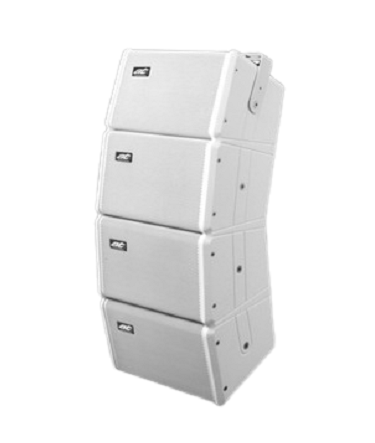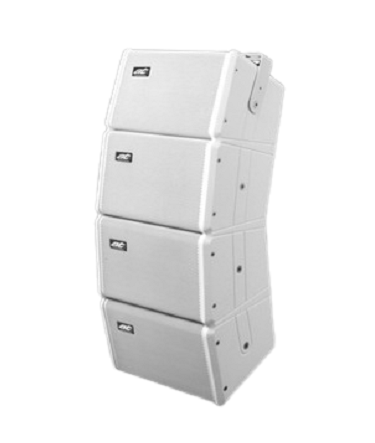How to Properly Configure a Line Array System for Large Venues?
A Line Array System is essential for delivering clear, powerful, and evenly distributed sound in large venues such as stadiums, concert halls, and outdoor events. Unlike traditional speaker setups, a Line Array System consists of multiple speakers arranged in a vertical array to ensure precise sound coverage, minimal interference, and high efficiency. However, proper configuration is key to achieving optimal audio performance. In this guide, we’ll cover everything from speaker selection to placement and tuning, helping you set up a Line Array System that delivers exceptional sound quality in large venues.

Understanding a Line Array System and Its Advantages
What Is a Line Array System?
A Line Array System is a speaker configuration designed to project sound over long distances while maintaining uniform coverage. The speakers are stacked in a vertical line, allowing them to work together as a single source, reducing sound dispersion issues common with traditional speaker setups.
Why Use a Line Array System for Large Venues?
Consistent Sound Coverage
- Ensures even sound distribution across the entire venue.
- Reduces volume drops and dead spots in the audience area.
High Efficiency and Clarity
- Minimizes interference and phase cancellation for clear sound reproduction.
- Enhances vocal and instrumental clarity, making it ideal for live performances.
Directional Control
- Allows engineers to shape sound coverage precisely.
- Reduces unwanted reflections from walls and ceilings.
Scalability
- Easily expandable to accommodate different venue sizes.
- Can be adjusted for both indoor and outdoor events.
Choosing the Right Line Array System for Your Venue
Key Components of a Line Array System
A Line Array System consists of several key components, each playing a crucial role in sound performance:
Line Array Speakers
- Designed for stacking in a vertical array.
- Available in various sizes and power ratings to suit different venues.
Subwoofers
- Provide low-frequency reinforcement.
- Placed separately to enhance bass response.
Amplifiers and DSP Processors
- Amplify and process the audio signal for optimal performance.
- Include built-in equalization, delay, and crossover settings.
Rigging and Mounting Hardware
- Used to securely suspend or stack speakers.
- Ensures safe and stable positioning of the array.
Factors to Consider When Selecting a Line Array System
Venue Size and Shape
- A larger venue requires more speaker elements for full coverage.
- Consider ceiling height and audience layout when determining speaker placement.
Speaker Dispersion and Coverage Angle
- Look for line array speakers with adjustable vertical and horizontal dispersion.
- Wider dispersion ensures even coverage without excessive overlap.
Power Handling and Sensitivity
- Higher power ratings ensure sufficient volume for large crowds.
- High sensitivity speakers deliver better efficiency with less power consumption.
Weather Resistance for Outdoor Use
- If using a Line Array System outdoors, choose weatherproof models.
- Protect speakers from moisture, dust, and extreme temperatures.
Proper Placement and Configuration of a Line Array System
Determining the Best Speaker Positioning
Vertical Array Alignment
- Maintain proper angling between speaker elements to ensure even coverage.
- Avoid excessive overlap, which can cause phase interference.
Height and Tilt Adjustments
- Position the top speaker high enough to reach the back of the venue.
- Slightly tilt the array to focus sound on the audience area.
Subwoofer Placement
- Place subwoofers on the ground for maximum low-frequency impact.
- Consider a cardioid subwoofer setup to reduce rear bass projection.
Setting Up the Delay and Phase Alignment
Time Alignment Between Speakers
- Apply delay settings to synchronize sound waves from different speakers.
- Ensures consistent arrival time for all frequencies.
Phase Correction
- Use phase alignment tools to prevent frequency cancellation.
- Ensures smooth transition between mid and low frequencies.
Delay for Distributed Speaker Systems
- In large venues, delay speakers may be required to maintain clarity.
- Adjust delay times to match the main Line Array System output.
Optimizing Sound Quality Through DSP and Equalization
Using DSP for Precise Control
A Line Array System benefits greatly from Digital Signal Processing (DSP), which helps fine-tune audio settings for optimal performance.
Crossover Settings
- Set the correct crossover points between speakers and subwoofers.
- Prevents frequency overlap that can cause muddy sound.
Equalization (EQ) Adjustments
- Reduce harsh frequencies in the high-mids to improve vocal clarity.
- Apply a slight bass roll-off to avoid excessive low-end buildup.
Compression and Limiting
- Use compression to balance loud and soft sounds.
- Set limiters to prevent speaker damage from excessive peaks.
Adjusting Sound Based on Venue Acoustics
Compensating for Echo and Reflections
- Use acoustic treatments if necessary.
- Adjust EQ settings to reduce reverberation effects.
Balancing Sound for Different Audience Areas
- Ensure front-row listeners don’t experience overpowering volume.
- Use zone-specific EQ adjustments to balance sound levels.
Common Mistakes to Avoid When Configuring a Line Array System
Incorrect Speaker Spacing
-
- Improper spacing can cause sound dropouts or excessive overlap.
Neglecting Phase Alignment
-
- Phase issues can lead to weak or uneven sound.
Overpowering High Frequencies
-
- Excessive highs can cause listener fatigue and poor vocal clarity.
Ignoring Venue-Specific Adjustments
-
- Failing to tailor settings to a venue’s acoustics leads to poor performance.
Best Practices for Maintaining a Line Array System
Routine Maintenance and Inspection
Check Rigging and Mounting Hardware
- Regularly inspect for loose bolts or wear and tear.
- Ensure all speakers are securely fastened.
Monitor Speaker Performance
- Use audio analysis tools to detect distortions or frequency imbalances.
- Replace damaged components promptly.
Firmware and DSP Updates
- Keep DSP firmware updated for the latest features and improvements.
- Recalibrate settings after software updates.
Testing Before Live Events
Perform a Full Sound Check
- Test all speakers at different audience positions.
- Make final adjustments to EQ and delay settings.
Use Reference Tracks
-
- Play known audio tracks to assess sound balance and clarity.
Have Backup Equipment Ready
-
- Keep spare cables, amplifiers, and DSP units on hand.
Achieving the Best Results with a Line Array System
Properly configuring a Line Array System ensures that large venues receive clear, evenly distributed sound with minimal distortion. By selecting the right speakers, optimizing placement, and fine-tuning DSP settings, you can create an immersive audio experience that meets the needs of concerts, conferences, and public events.
A well-calibrated Line Array System not only enhances sound clarity but also ensures that audiences, regardless of their position in the venue, experience high-quality audio. By following these best practices, you can confidently set up a Line Array System that delivers outstanding results for any large venue.
